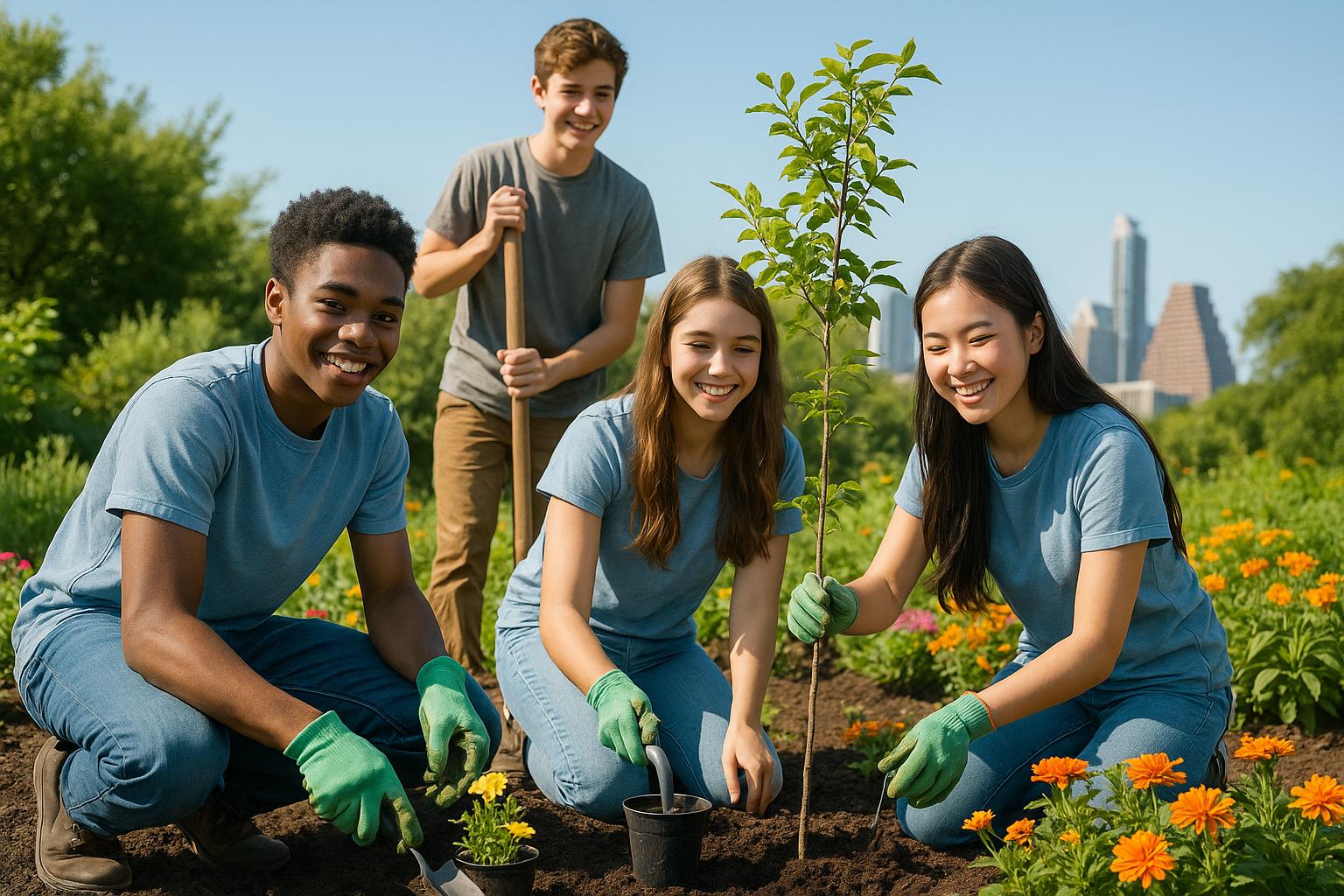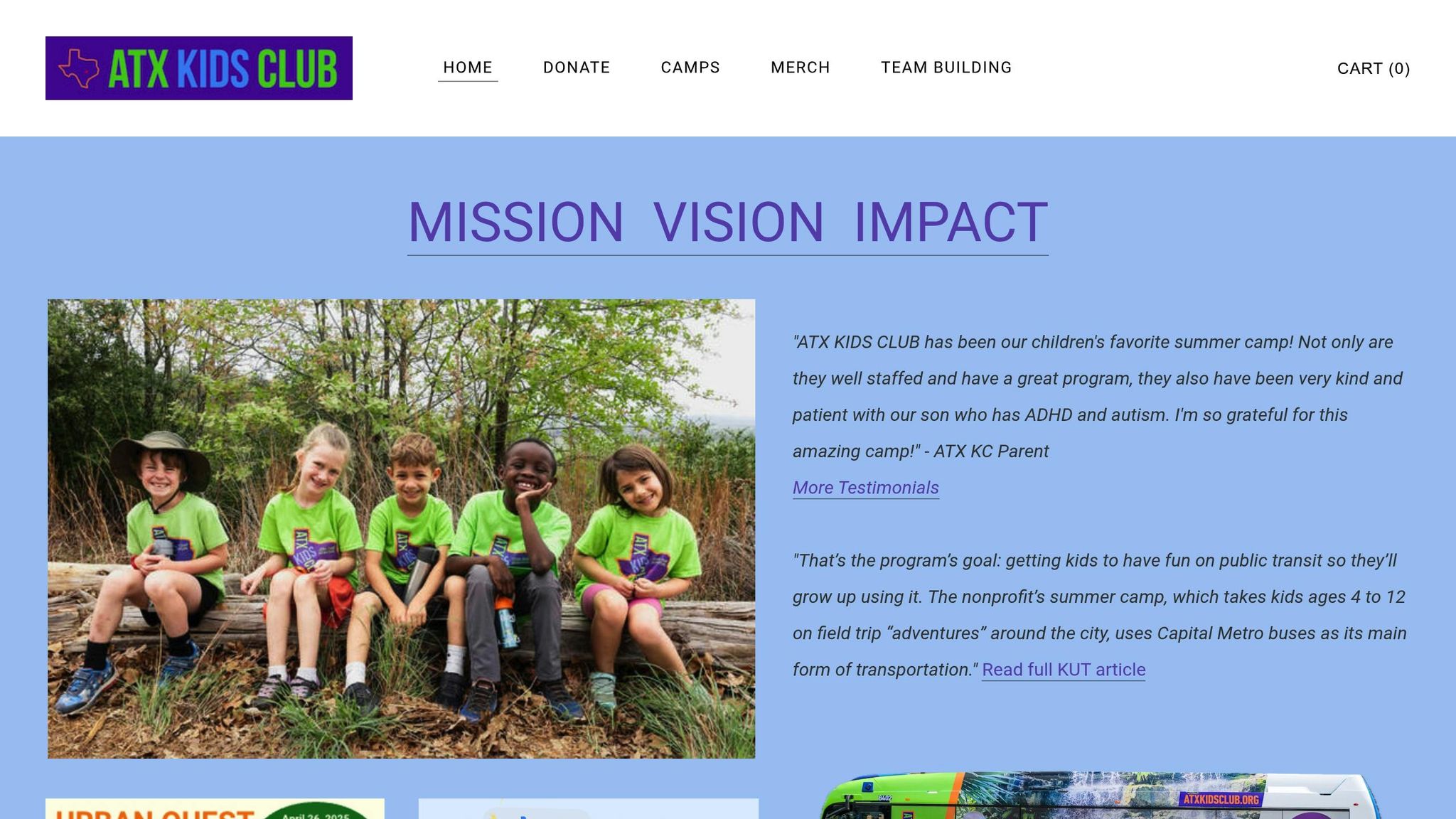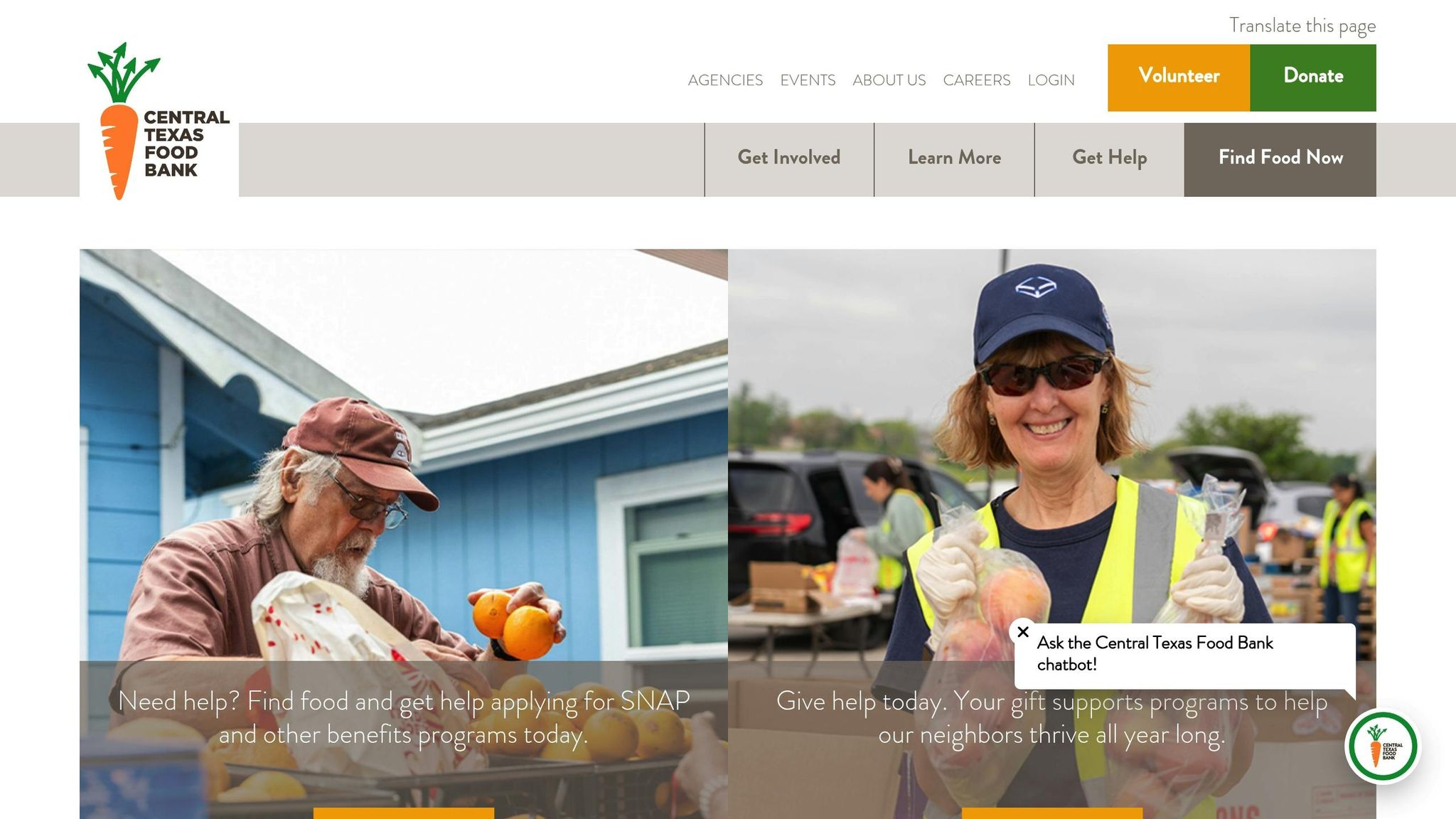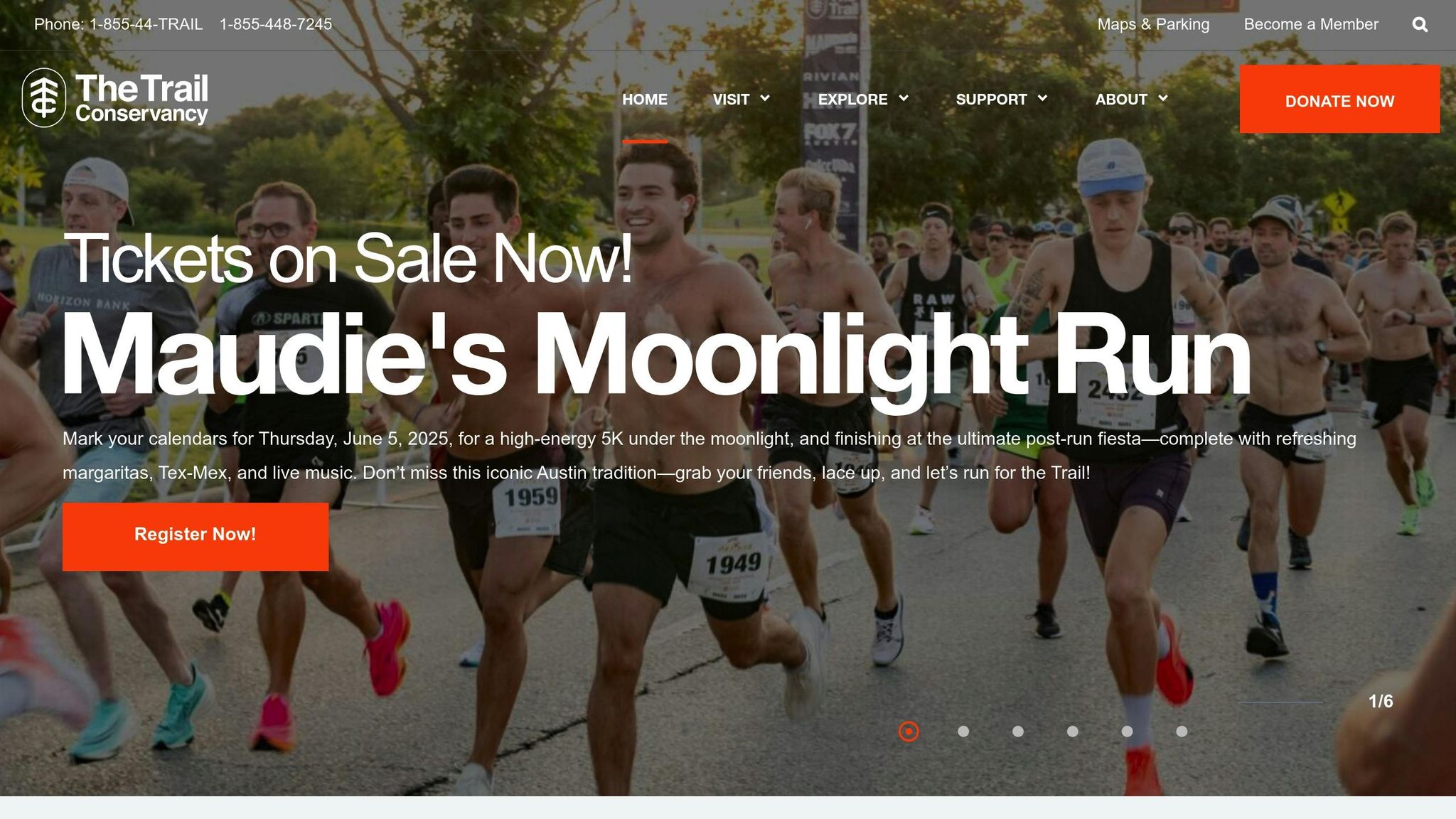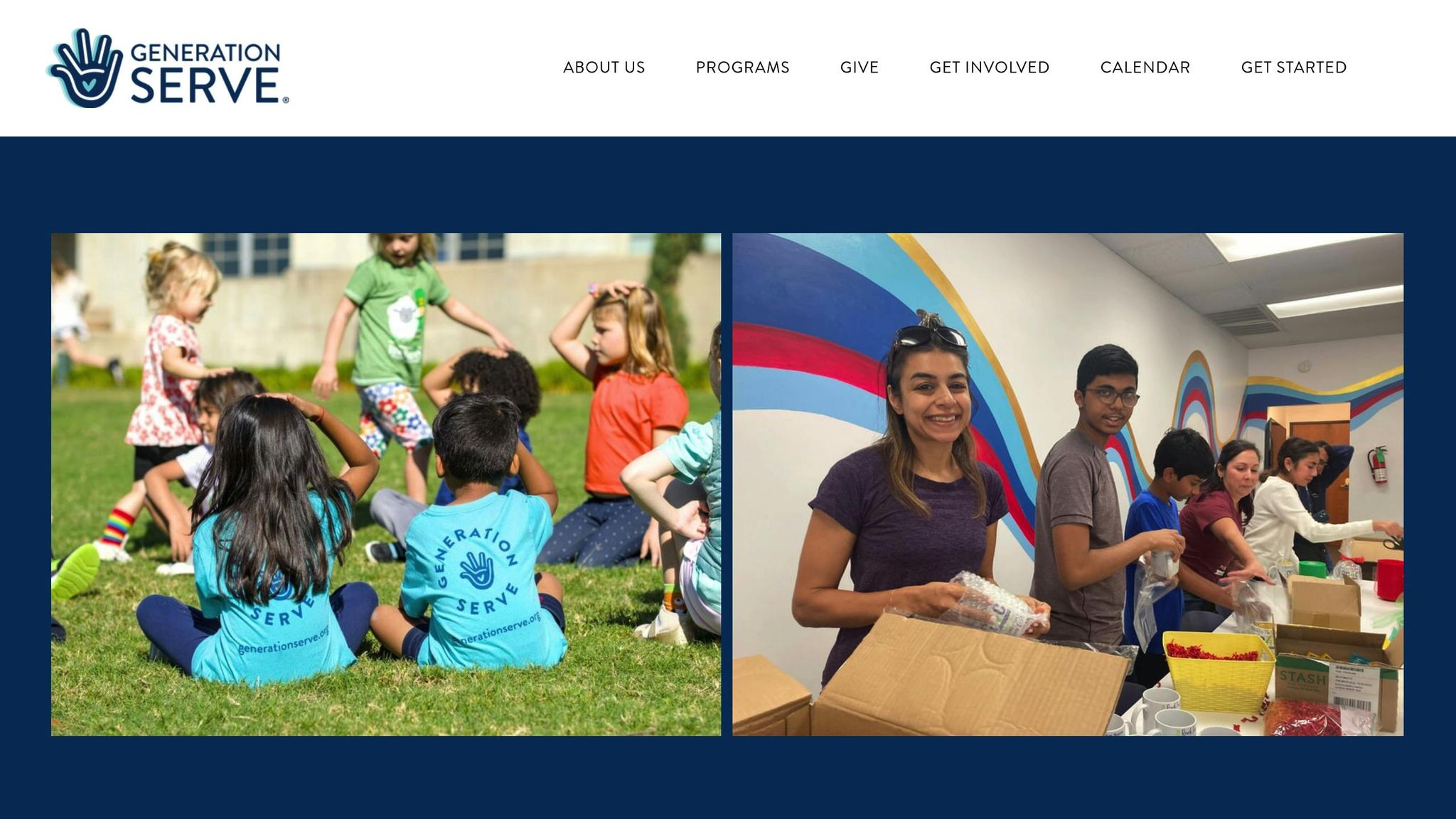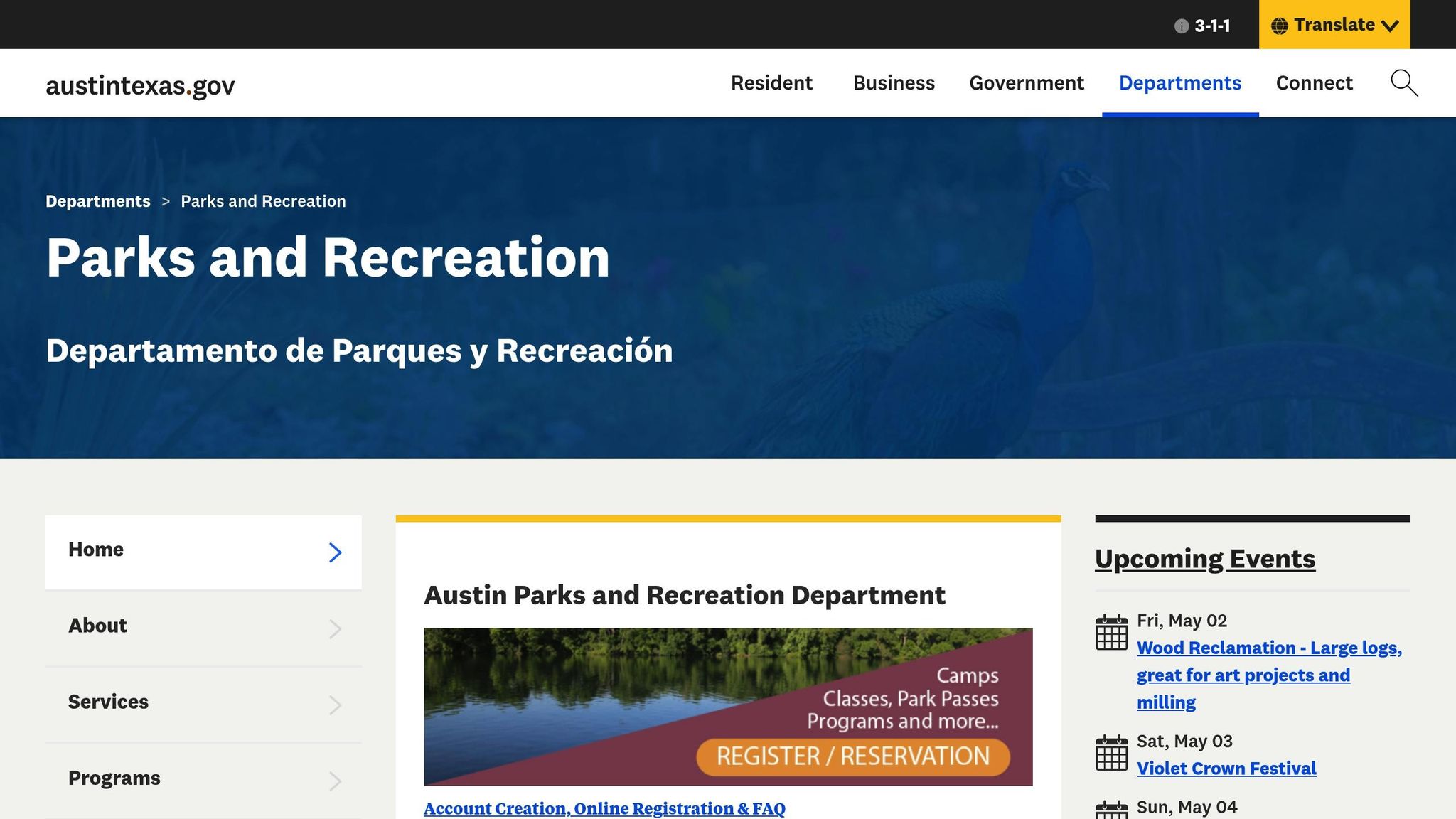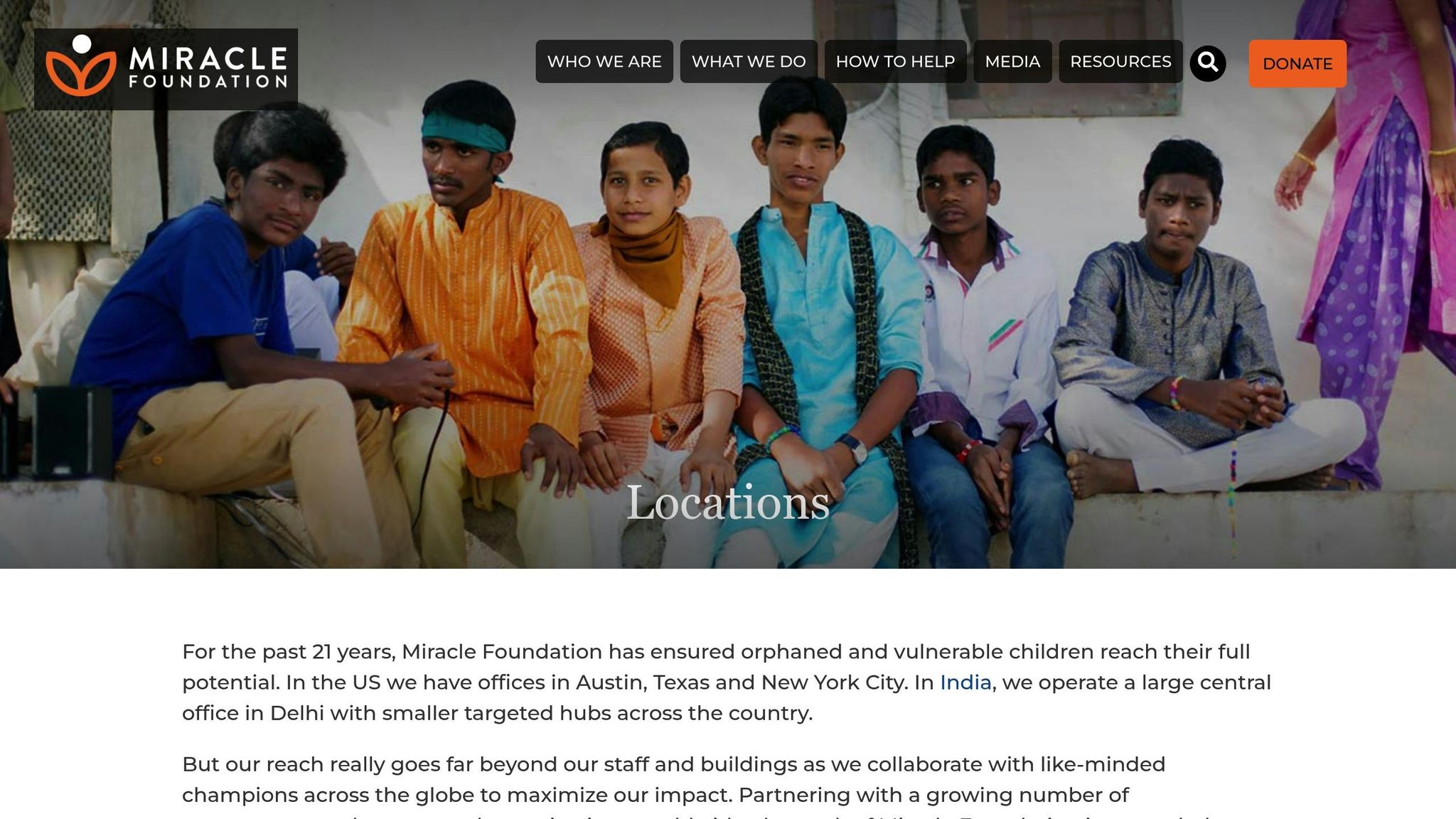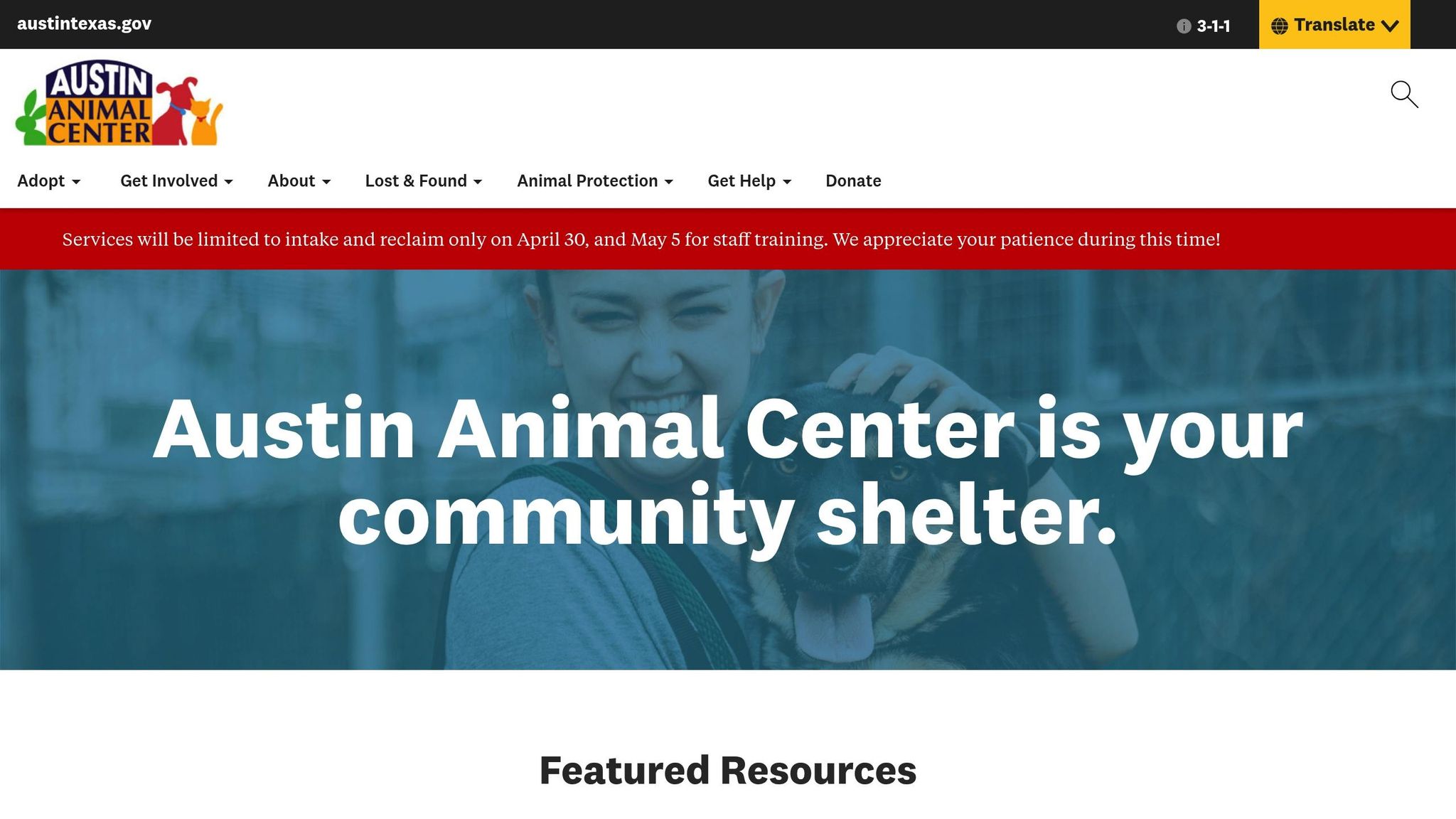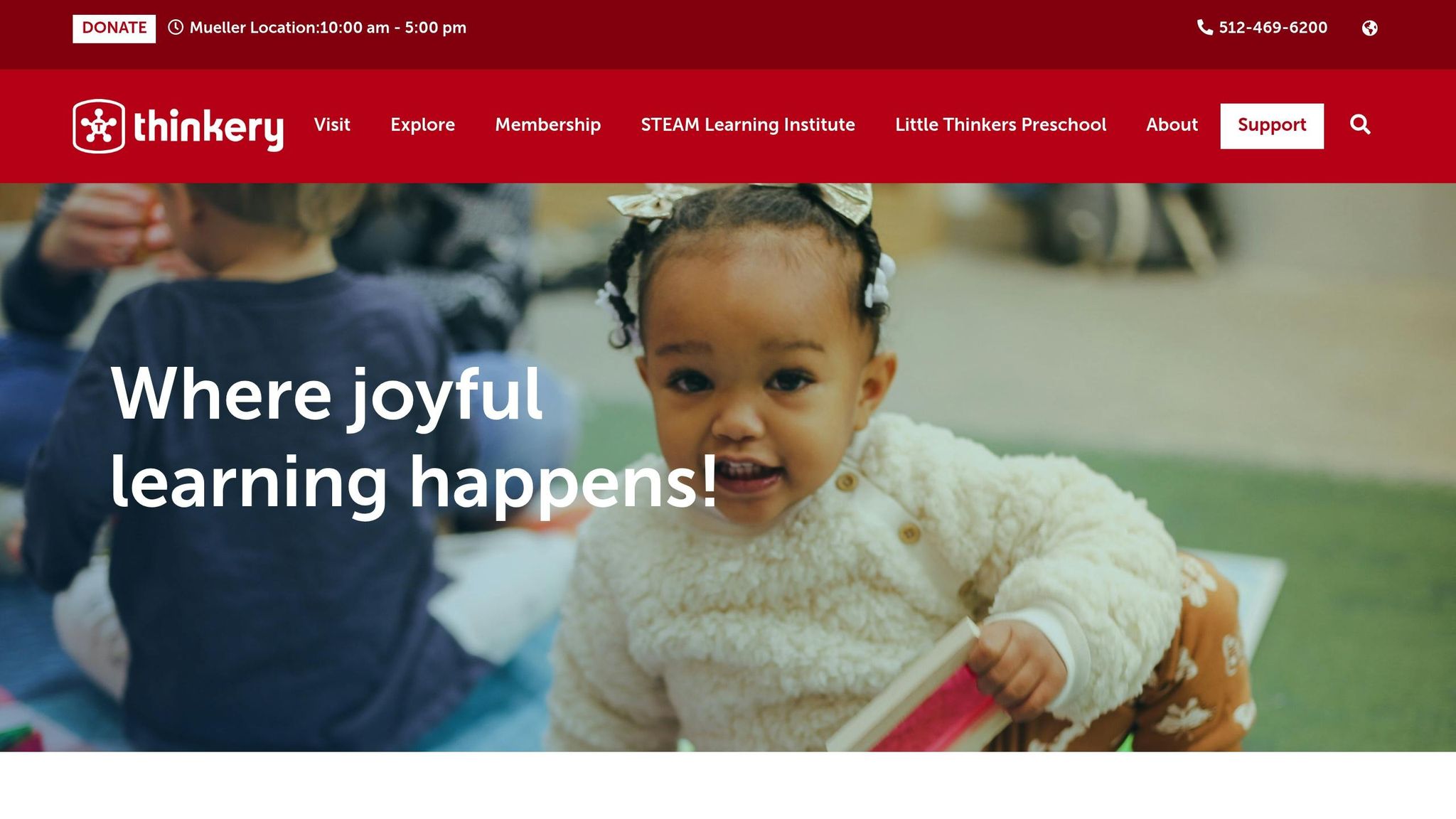Looking to spend your summer productively? Austin offers a variety of teen volunteer programs that let you give back to the community, gain skills, and build your resume. Whether you’re interested in libraries, conservation, animal care, or helping fight hunger, there’s something for everyone.
Here’s a quick overview of 10 programs to consider:
- Austin Public Library: Help with youth programs, summer reading activities, and event setup. Ages 13–17.
- ATX Kids Club: Supervise younger children on field trips and lead STEM activities. Ages 14–18.
- Central Texas Food Bank: Sort and distribute food to families in need. Flexible shifts for ages 8+ (with supervision).
- The Trail Conservancy: Volunteer for outdoor conservation projects.
- GenerationServe: Service projects like food drives and eco-crafts, plus leadership tracks. Ages 12–18.
- Austin Parks and Recreation: Assist with park maintenance, sports, or community events.
- Miracle Foundation: Advocate for foster care, organize clothing drives, and gain public speaking skills.
- Austin Animal Center: Care for animals, clean shelters, and assist with adoptions. Ages 13–17.
- Urban Roots: Learn sustainable farming and earn a stipend while growing fresh produce.
- Thinkery: Lead STEAM activities and assist with museum exhibits.
Why Volunteer?
- Build Skills: Leadership, teamwork, and time management.
- Boost College Applications: Volunteer hours stand out.
- Make an Impact: Support local causes and meet community needs.
Most programs require applications in early spring (March–April), so plan ahead!
The Perks of Being a Teen Summer Reading Volunteer
1. Austin Public Library: Teen Program
The Austin Public Library’s Teen Volunteer Program provides an enriching 8-week summer experience for teens aged 13–17.
Program Structure and Time Commitment
Volunteers commit to one 4-hour shift per week, scheduled between 10:00 AM and 6:00 PM. To ensure reliable service, participants are allowed no more than two absences during the program’s duration.
Key Responsibilities
Teen volunteers contribute to various library functions, including:
- Preparing programming materials and craft kits
- Organizing and maintaining library collections
- Assisting with youth programs
- Setting up and breaking down events
- Supporting summer reading activities
Application Process
Applications are accepted from March 1-31, with a clear and organized selection process:
| Stage | Timeline | Details |
|---|---|---|
| Application Submission | March 1-31 | Submit an online form, listing up to 5 preferred branch locations |
| Virtual Interviews | Late April/Early May | 20-25 minute interviews for selected candidates |
| Acceptance Notification | Early May | Accepted applicants must confirm participation within 3 business days |
| Orientation | Late May | Attend a mandatory 1.5-hour training session |
This step-by-step process ensures a smooth transition for new volunteers.
Special Initiatives
The library has introduced programs aimed at empowering teen leaders. For example, the "Save the Books Social Network" initiative, launched in March 2024, selected five teens to advocate against book bans through virtual campaigns. Each participant received a $1,000 stipend for their efforts.
"During summer 2025, teen volunteers helped implement the ‘Read, Learn & Earn’ program, distributing 1,200+ free books to participants who completed 600 reading minutes." – Austin Public Library Summer 2025 Program
Accommodation and Support
The library provides accommodations for physical or religious needs. Requests can be sent to APL.Volunteers@austintexas.gov.
This program not only helps teens develop practical job skills but also offers verification letters for school applications, making it an excellent opportunity for young learners.
2. ATX Kids Club: Teen Leaders
ATX Kids Club’s Teen Leaders program offers an engaging summer opportunity for teens (ages 14–18) to build leadership skills through educational field trips and mentoring younger participants. Here’s an overview of the program’s structure, responsibilities, and perks.
Program Structure
Participants commit to one of two 4-week summer sessions:
- June 2–27, 2025
- July 7–August 1, 2025
Each week involves 20 hours of participation, with field trips scheduled Monday through Thursday from 8:30 AM to 3:30 PM.
Core Responsibilities
Teen Leaders take an active role in organizing and leading field trips around Austin. Their tasks include:
| Responsibility | Details |
|---|---|
| Child Supervision | Oversee children (ages 5–12) during outings |
| Activity Leadership | Lead STEM projects and arts-based activities |
| Safety Management | Enforce safety protocols during trips |
| Program Support | Help with daily activity setup and coordination |
Training and Development
The program begins with a 12-hour certification course covering:
- CPR/First Aid certification through the American Red Cross
- Positive behavior management techniques
- Field trip safety guidelines
- Group leadership strategies
"We emphasize peer mentorship – older teens coach first-year volunteers", says Program Director Maria Gonzalez.
Application Process and Requirements
| Requirement | Details | Deadline |
|---|---|---|
| Age Eligibility | 14–18 years old | N/A |
| Application | Submit online with a personal statement | April 15, 2025 |
| References | Two teacher recommendations | April 15, 2025 |
| Program Fee | $25 (covers training and uniform) | Upon acceptance |
| Interview | Meet with program staff | Early May 2025 |
Recognition and Perks
Teen Leaders gain several benefits, including:
- Official documentation of volunteer hours
- Community service cords for graduation
- Priority for paid counselor roles
- "Community Scholar" designation for 160+ hours of service
- Leadership Excellence awards for top participants
Transportation Support
To make the program accessible, ATX Kids Club provides free shuttle service from six central Austin locations, such as:
- Austin Central Library
- Gus Garcia Recreation Center
- Other convenient pickup points across the city
Fundraising Impact
In 2023, Teen Leaders raised an impressive $15,000, enabling 602 campers to join summer activities.
Professional Development
Weekly workshops help participants build leadership skills through:
- Conflict resolution training
- Activity planning sessions
- Team management techniques
- STEM-focused education
For instance, during the 2024 "Science Explorers" day at Pease District Park, Teen Leaders created and led interactive activities, showcasing their growing confidence and leadership abilities.
3. Central Texas Food Bank: Teen Volunteers
The Central Texas Food Bank offers teens the chance to combat hunger in their community through hands-on volunteer work. Their programs are designed to give young people meaningful ways to make a difference.
Program Overview
The food bank runs two main programs for teens:
| Program Type | Age Requirements | Time Commitment | Activities |
|---|---|---|---|
| Regular Shifts | 8–14 (with 1:1 supervision); 15+ (group supervision) | 2.5 to 3.5 hours per shift | Sorting and packaging food |
| Youth Ambassador | 5+ (with adult mentors) | 3-month commitment | Leading projects, advocacy |
Teens can pick shifts that fit their schedules while learning useful skills. Youth Ambassadors take on leadership roles, managing projects and engaging in community outreach.
Summer 2024 Schedule
Volunteer shifts are available at these times:
- 8:30 AM–12:00 PM
- 1:00 PM–3:30 PM
- 6:00 PM–8:30 PM
Volunteer Roles and Activities
Teen volunteers handle key tasks to support food distribution:
| Activity Area | Responsibilities | Skills Gained |
|---|---|---|
| Warehouse Operations | Sorting donations, packing boxes | Teamwork, quality control |
| Mobile Pantry | Distributing food, assisting families | Customer service, logistics |
| Food Safety | Inspecting items, ensuring standards | Attention to detail, safety protocols |
A new netting machine introduced in 2024 has made produce packaging faster and more efficient. This helps volunteers distribute fresh vegetables while maintaining strict food safety guidelines.
Community Impact
The program has made a measurable difference:
- 54 million meals provided annually through 300 partner agencies
- Summer 2024 goal: 6,000 meals served daily
- 34% of clients are children and teens
- One mobile pantry event distributed 7,000 pounds of food to 120 families
How to Get Started
Teens interested in volunteering can follow these steps:
- Sign up for shifts on VolunteerHub.
- Complete required safety training.
- Wear closed-toe shoes and comfortable clothing.
- For Youth Ambassador details, email volunteer@centraltexasfoodbank.org.
Success in Action
In February 2024, the Austin Spartans, a teen volunteer group, developed new quality control protocols that streamlined donation processing. Their system is now a standard practice at the food bank.
To ensure safety, all volunteers must be able to lift up to 40 pounds. Safety training is provided for every role. Youth Ambassadors also gain experience in project management and community outreach.
4. The Trail Conservancy: Nature Programs
At this time, The Trail Conservancy doesn’t have specific teen volunteer programs listed. If you’re passionate about outdoor conservation, it’s best to reach out directly through their official website or by phone to get the most up-to-date information. For other confirmed volunteer options, check out the next sections.
5. GenerationServe: Youth Programs
GenerationServe offers structured volunteer programs for teens aged 12–18, providing opportunities to make a real difference in the community. For Summer 2025, the programs have been updated to maximize the impact of each participant’s efforts.
The programs are divided into two age groups to ensure suitable activities and responsibilities:
- Ages 12–14: Commit 10–15 hours per month
- Ages 15–18: Commit 20–25 hours per month
Running from June 9 through August 15, the Summer 2025 session features weekly themed cohorts like Environmental Stewardship and Youth Advocacy. Teens can choose between in-person or virtual participation, offering flexibility while fostering both community involvement and skill development.
| Program Type | Time Commitment | Key Activities |
|---|---|---|
| Service Squad | 2–3 hours/week | Assembling hygiene kits, food drives, eco-crafts |
| Service Leadership Track | 4–5 hours/week | Project design, mentorship, community outreach |
| Virtual Workshops | 1–2 hours/week | Skill-building, leadership training |
In 2024, teen volunteers contributed over 12,000 service hours and helped serve 3,200 meals. Partnerships with organizations like Mobile Loaves & Fishes and Keep Austin Beautiful provide a variety of service opportunities.
"Post-program assessments show that 92% of teens report increased leadership confidence", according to GenerationServe’s 2024 annual report.
Key Dates and Details for Summer 2025:
- Registration opens March 1, with an early bird deadline on April 15.
- New volunteers receive a "Service Starter Pack" and are paired with experienced teens through a buddy system.
- Mandatory orientation is scheduled for May 10–11 at the South Austin headquarters. A $25 registration fee applies, with financial assistance available.
GenerationServe also recognizes outstanding participants with the Presidential Volunteer Service Award for 100+ annual service hours. After every project, "Reflect & Connect" sessions encourage discussions about the impact of their work on the community.
In-person activities maintain a 1:5 adult-to-teen ratio and provide all necessary safety equipment. Virtual options remain available for those who prefer remote participation.
Spots fill up fast, especially for the popular Service Leadership Track, so early registration is highly recommended!
sbb-itb-4c99469
6. Austin Parks and Recreation: Teen Volunteer Opportunities
Austin Parks and Recreation provides teens with opportunities to volunteer in various roles, including:
- Park Maintenance: Help with tasks like maintaining trails and caring for gardens.
- Recreation Programs: Assist with sports activities and camp-style events.
- Community Events: Lend a hand during festivals and other local celebrations.
These roles offer hands-on experience in caring for Austin’s public spaces. For more information, reach out to the department or check their website.
7. Miracle Foundation: Youth Support
Miracle Foundation offers teens the chance to make a difference in foster care through two key programs: the Youth Executive Council (YEC) and the Student Ambassador Program. These initiatives give young volunteers meaningful roles, such as:
- Organizing clothing drives for foster children
- Running awareness campaigns about foster care
- Planning community events for foster families
- Managing social media advocacy efforts
In 2023, student volunteers from four Austin high schools collected over 1,200 new clothing items during a campus drive. Additionally, 89% of participants reported gaining skills in public speaking and event planning.
"Our Tech for Foster Teens initiative specifically addresses digital divide issues in local group homes, ensuring foster youth have the tools they need to succeed academically", explains Zoey Li, founder of the YEC.
Teens in the program benefit from biweekly mentorship, monthly workshops, trauma-informed communication training, and regular project planning sessions. The program is designed to fit around school schedules, with weekly Sunday Zoom meetings and flexible hours for independent projects. Participants can earn between 26 and 250 service hours, making them eligible for the President’s Volunteer Service Award.
Applications are available on the Miracle Foundation website, with priority given to students from Central Texas high schools. The program runs on an academic-year schedule (June through May), allowing participants to balance their involvement with school responsibilities.
By partnering with organizations like Austin’s Department of Family and Protective Services and the Central Texas Food Bank, volunteers gain hands-on experience addressing pressing foster care challenges.
This program adds a meaningful option to Austin’s summer volunteer opportunities for teens.
8. Austin Animal Center: Teen Helpers
The Austin Animal Center gives teens aged 13-17 a chance to volunteer and gain experience in animal care and shelter operations. Teens under 16 must have a guardian present, attend a two-hour orientation, and provide proof of a tetanus vaccination. Those 16 and older can volunteer on their own. To ensure safety, the center enforces a 1:4 staff-to-volunteer ratio during dog walks and conducts quarterly emergency response drills.
The program focuses on two main areas:
Animal Care and Enrichment
- Spend time socializing shy cats and walking dogs on designated trails
- Help with feeding, grooming, and clicker training for adoptable dogs
- Assemble welcome kits for new pet owners
Shelter Operations
In 2024, teen volunteers dedicated over 1,200 hours to tasks like cleaning kennels, sanitizing play areas, and organizing donations. These efforts allow staff to concentrate on medical care and adoption services.
For teens seeking more involvement, the program offers extended opportunities. Those who log 50+ volunteer hours can join the Foster Ambassador program, caring for neonatal kittens and sharing updates on Instagram. In 2023, teen volunteers collected 2,500 lbs of pet food through a donation drive and launched a campaign that led to 43 adoptions, helping achieve a 92% live release rate. Teens can also join the Ambassador Squad to create social media content. In Q2 2024, volunteers hosted 12 community outreach events, educating over 850 Austin residents about responsible pet ownership.
Applications for summer 2025 open on April 1. To apply, submit a guardian-signed waiver, immunization records, a 150-word statement, and commit to volunteering at least 6 hours per month. All volunteers must complete training on animal body language, shelter safety, and customer service.
Keep reading to discover more opportunities for teens to make a difference in Austin this summer.
9. Community Gardens: Teen Gardeners
Urban Roots runs a standout teen gardening program in Austin through its Food and Leadership Fellowship. Based on a 3.5-acre urban farm, the program pays high school students between $7.50 and $12 per hour. During the 2022–2023 cycle, participants grew 91,704 servings of produce and collectively earned $122,000 in stipends.
The fellowship offers hands-on training in areas like:
- Planning and implementing crop rotations
- Harvesting using eco-friendly methods
- Managing produce packing and distribution
- Earning certifications in tool safety
Urban Roots increased its production by 40% and donated over 20,000 pounds of produce. A program graduate, Jeff Cervantes, 19, used the skills he gained to study agriculture at Austin Community College. Since 2008, Urban Roots has paid $670,000 in stipends to 525 teens, who have grown 380,000 pounds of produce – 46% of which was donated to fight local food insecurity.
Other community gardens in Austin also provide unique learning opportunities. Sunshine Community Gardens, for example, features specialized zones where teens can work on projects like environmental monitoring. They also have a tomato testing garden for cultivar trials, pollinator zones, and a MICAH 6 plot that donates fresh produce to local food pantries.
The Ella Austin Community Garden takes things further by partnering with local universities. Teens, guided by Program Coordinator Mary Ann Lovett, learn everything from soil preparation to harvesting and even get to cook meals with their produce.
Safety and training are priorities across all programs. Mandatory orientations cover tool usage, heat illness prevention, and soil safety.
Want to get involved this summer? Here’s how:
- Reach out to Urban Roots at volunteer@urbanrootsatx.org for Tuesday/Thursday volunteer shifts.
- Submit applications by early April for paid fellowship spots.
- Be ready to commit 20–30 hours a week.
Transportation isn’t an issue, thanks to Capital Metro bus passes and organized carpools to the South Austin farm. Plus, many programs provide documentation that can count toward school community service hours or boost college applications.
These programs give teens practical skills in sustainable farming while fostering stronger connections within the community.
10. Thinkery: Museum Volunteers
Thinkery offers teens the chance to gain hands-on experience through two main pathways: VolunTeens and Counselors-in-Training (CITs).
In 2023, the program saw impressive participation:
- 208 VolunTeens contributed a total of 8,880 service hours.
- 30 CITs provided 2,200 hours during summer camps.
Teen volunteers take on various roles throughout the museum. In the Spark Shop, they assist with exhibit upkeep and operate 3D printers. During Baby Bloomers sessions, they guide young learners through STEAM activities. To prepare for these responsibilities, volunteers complete a structured training program.
Training and Commitment
The training program requires 60 hours of preparation followed by a 40-hour service commitment. It focuses on:
| Training Area | Skills Covered |
|---|---|
| Child Safety | ADA compliance, sensory-friendly methods |
| STEAM Education | Leading activities, preparing materials |
| Professional Skills | Public speaking, inventory management |
| Technical Tools | Operating 3D printers, maintaining exhibits |
Support for Volunteers
Thinkery ensures accessibility for its volunteers. Free bus passes are available for shifts longer than three hours, thanks to a partnership with CapMetro. The museum also offers bike racks and scooter parking at its Mueller location.
The program not only benefits the museum but also helps teens build career skills. Quarterly STEAM Career Spotlights introduce volunteers to local professionals, while a partnership with Austin ISD ensures service hours count toward graduation requirements. Notably, 35% of Thinkery’s seasonal staff began as teen volunteers.
How to Apply for Summer 2024
Here’s the application process:
- Submit an online application during March recruitment.
- Participate in a group interview.
- Pass a background screening through the Raptor system.
- Attend a mandatory orientation.
Recognizing Achievements
Volunteer achievements are celebrated with digital badges, which can lead to invitations to donor events and leadership recommendation letters. The program also offers a "Volunteer-Explorer" model, allowing teens to balance service hours with exclusive learning workshops. This approach provides both practical experience and deeper knowledge in STEAM education.
Conclusion: Getting Started with Teen Volunteering
Starting with teen volunteer programs in Austin is straightforward. Here’s how you can connect with opportunities:
Finding the Right Program
When choosing a volunteer program, think about these factors:
| Program Element | Things to Consider |
|---|---|
| Time Commitment | How many hours per week, the length of the program, and whether it’s seasonal or available year-round |
| Location | How close it is to your home or school and if transportation options are convenient |
| Interest Areas | Whether it aligns with your passions, like STEAM, animal care, nature conservation, community service, or education |
| Required Training | The time needed for orientation or if any certifications are required |
| Age Requirements | The minimum age or grade level needed to participate |
Steps to Get Started
Here’s how to begin:
- Research Organizations: Look into their requirements, schedules, and deadlines to find a good match.
- Reach Out to Multiple Programs: Trying out different organizations can help you discover what you enjoy most.
- Prepare Necessary Documents: Commonly requested items include:
- A photo ID
- Parental consent forms
- School transcripts (if required for educational programs)
- References
After you’ve started, keep an eye out for other opportunities by staying connected.
Staying Updated
To find new opportunities and stay informed:
- Sign up for newsletters from organizations
- Follow their social media accounts
- Join community groups in your area
- Attend volunteer fairs, which typically happen in March and August
Keep in mind that many programs fill quickly, especially for summer roles. Recruitment often starts in early spring, with applications opening between February and April. It’s a good idea to start your search 3–4 months before you plan to begin volunteering.
Getting involved with Austin Local Team not only connects you with current volunteer openings but also helps you become part of Austin’s lively community.
FAQs
What are the benefits of joining a teen volunteer program in Austin, and how can it help with future opportunities?
Participating in a teen volunteer program in Austin offers numerous benefits, including personal growth, skill development, and the chance to make a positive impact in your community. These programs can help teens build confidence, learn teamwork, and develop leadership skills, all while giving back to causes they care about.
In addition to the personal rewards, volunteer experience can enhance college applications and job resumes. Admissions officers and employers often value community involvement as it demonstrates responsibility, initiative, and a commitment to making a difference. Whether you’re looking to explore potential career paths, meet new people, or simply make a meaningful contribution, volunteering as a teen can open doors to future opportunities.
How do I apply for teen volunteer programs in Austin, and when are the application deadlines?
The application process and deadlines for teen volunteer programs in Austin can vary depending on the organization. Typically, you’ll need to fill out an online application, which may include providing personal information, availability, and sometimes a short essay or references.
Deadlines are often set a few months before the program begins, especially for summer opportunities, so it’s a good idea to check the specific organization’s website or contact them directly for the most accurate details. Starting your search early in the year can help ensure you don’t miss out on any opportunities!
Do these teen volunteer programs in Austin have any fees, and is financial assistance available?
Some teen volunteer programs in Austin may have associated fees, such as registration costs or materials expenses. However, many programs are free, and some organizations offer financial assistance or scholarships to ensure participation is accessible to everyone. It’s best to check directly with each organization for specific details about costs and available support options.

